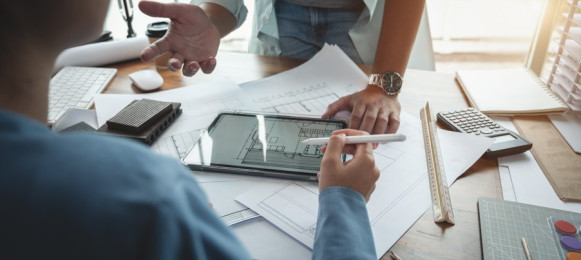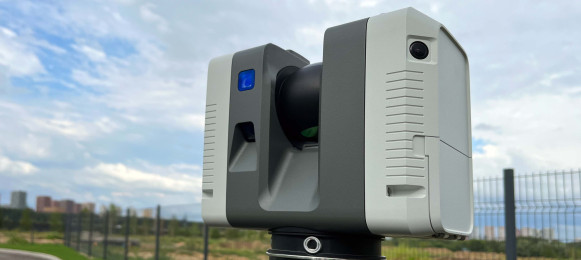The green roof has evolved from a niche, eco-friendly concept to a vital component in sustainable urban development. As cities continue to grow, with increasing focus on reducing carbon emissions and managing stormwater, green roofs are increasingly gaining prominence. However, maintaining these roofs efficiently presents unique challenges, from optimising plant health to managing drainage and energy performance – but all this is about to change thanks to digital technology – or to be more precise - digital twins, writes Ryan Donoghue, of AJ Digital.
A digital twin is a virtual replica of a physical asset, system, or process that is continuously updated with real-time data. This technology creates a dynamic and data-driven simulation, allowing users to monitor the health and performance of a physical entity - in this case, a green roof - from anywhere in the world.
In the context of green roofs, a digital twin allows facility managers, architects and engineers to monitor conditions such as soil moisture levels, plant growth, drainage systems and even energy efficiency in real time. By introducing IoT sensors, AI and analytics, the digital twin collects data that can be used to simulate scenarios, predict maintenance needs, and optimise overall roof performance.
The key benefits
One of the most significant advantages of using a digital twin is the ability to monitor the roof in real time. Sensors embedded within the roof collect data on key factors such as moisture and temperature levels, plant health and growth patterns, water retention and drainage performance and roof load-bearing capacity.
This live data is relayed to the digital twin, providing insights into the roof’s condition without the need for manual inspections. For example, instead of waiting for a plant to wither before realising there is an irrigation problem, the digital twin will detect fluctuations in soil moisture early enough, to help help avoid plant stress.
This ability to monitor remotely is especially useful for larger or more complex green roofs installed on high-rise buildings, where regular physical inspections could be logistically difficult or expensive.
One of the key aspects of maintaining a green roof is ensuring that the infrastructure supporting the vegetation remains in optimal condition. Waterlogging, plant diseases, or even infrastructure damage caused by excessive vegetation growth can degrade a roof over time. A digital twin helps by offering predictive maintenance capabilities.
Through predictive algorithms, a digital twin can alert building managers when elements of the roof might require maintenance. For example, if the soil’s water retention begins to deviate from expected levels, the system could recommend clearing clogged drainage systems or adjusting irrigation schedules before serious damage occurs. This pre-emptive approach reduces downtime, prolongs the roof's lifespan and minimises repair costs.
Furthermore, digital twins allow for simulating different "what-if" scenarios. This feature helps facility managers understand how specific weather conditions or long-term exposure to environmental factors might affect the green roof, enabling smarter planning and resource allocation.
Optimising water management
Because green roofs play an essential role in urban water management by helping to absorb rainwater and reduce the load on stormwater systems, it can mean that poorly managed water retention can lead to difficult issues. These include over-saturation of the roof’s soil layers, damage to underlying building structures and compromised plant health.
The digital twin integrates data from rainfall patterns, soil moisture sensors and drainage systems to provide an automated solution for managing water levels. If the system detects over-saturation, it can trigger alerts for maintenance or automatically adjust the irrigation schedule.
Water management optimisation not only protects the building but also contributes to environmental sustainability. By reducing the amount of rainwater runoff, green roofs with digital twins can better mitigate urban flooding, a growing concern in cities worldwide.
Green roofs are also well-known for their ability to insulate buildings, reducing both heating and cooling costs. However, the insulation benefits of green roofs can be highly dependent on factors such as the type of plants used, the depth of the soil and the overall roof design.
A digital twin allows building managers to track and optimise thermal regulation by monitoring real-time temperature data from both the building and the roof. This data enables precise adjustments to irrigation and plant maintenance schedules to maintain the ideal insulating properties of the roof. For example, during hot summer months, a well-irrigated green roof can lower indoor temperatures by several degrees, reducing the need for air conditioning.
Furthermore, data-driven insights from the digital twin can inform future projects by helping architects and engineers understand how different plant species or soil compositions affect a building’s energy efficiency over time.
Supporting sustainable urban development
All this means that the integration of digital twins into green roofs supports the larger goal of sustainable urban development. As cities grow, the demand for green spaces that enhance biodiversity and mitigate urban heat islands has increased. Green roofs provide a space-efficient way to incorporate nature into densely populated areas.
Furthermore, digital twins help maximise the environmental benefits of green roofs by ensuring that they function as intended. For example, a well-monitored green roof contributes to reduced energy consumption through improved insulation, enhanced biodiversity by supporting the growth of native plant species, improved air quality by absorbing pollutants and producing oxygen and lower carbon emissions by reducing reliance on artificial cooling systems.
While the initial setup of a digital twin may require investment in IoT sensors and digital infrastructure, the long-term cost savings are substantial. By optimising water use, preventing infrastructure damage and improving energy efficiency, the digital twin reduces the need for frequent repairs and lowers operational costs.
Additionally, improved roof performance translates to longer roof lifespans, reducing the frequency of costly re-installations. For building owners, this offers a compelling return on investment, making green roofs with digital twins an attractive choice for both commercial and residential developments.
In the construction and property management industries, data-driven decision-making is becoming the gold standard. A digital twin enables facility managers to make informed decisions based on real-time data. Whether it’s adjusting plant species for better roof insulation or optimising irrigation for water conservation, these decisions are grounded in accurate, actionable insights.
For example, digital twins can integrate with weather forecasting systems, allowing managers to make adjustments in anticipation of extreme weather conditions, such as heavy rainfall or drought. The result is a more resilient, adaptable green roof that can cope with the dynamic demands of urban environments.
All this means that as the construction industry continues to adopt smart technologies, digital twins are likely to become a standard tool in green roof management. Advancements in AI and IoT technology will only enhance the capabilities of digital twins, enabling even more precise monitoring and control over urban green spaces.
Looking forward, digital twins could integrate with city-wide infrastructure systems, allowing local authorities to monitor and optimise green roofs across an entire urban landscape. Such integration would represent a significant leap forward in sustainable urban planning, where data-driven solutions help mitigate the effects of climate change while improving urban lives.
We can see that incorporating a digital twin on a green roof offers numerous advantages, from improved monitoring and predictive maintenance to cost savings and enhanced environmental benefits. For building owners and managers, this technology provides a powerful tool to optimise the performance of green roofs, ensuring they remain a valuable asset in the fight against climate change and urban heat islands.
As AJ Digital continues to advocate for sustainable infrastructure solutions, the use of digital twins represents a forward-thinking approach to urban design, one that promises smarter, greener cities for future generations. The convergence of green roofs and digital twin technology showcases how modern innovation can meet sustainability goals, offering both economic and ecological benefits in one solution.



